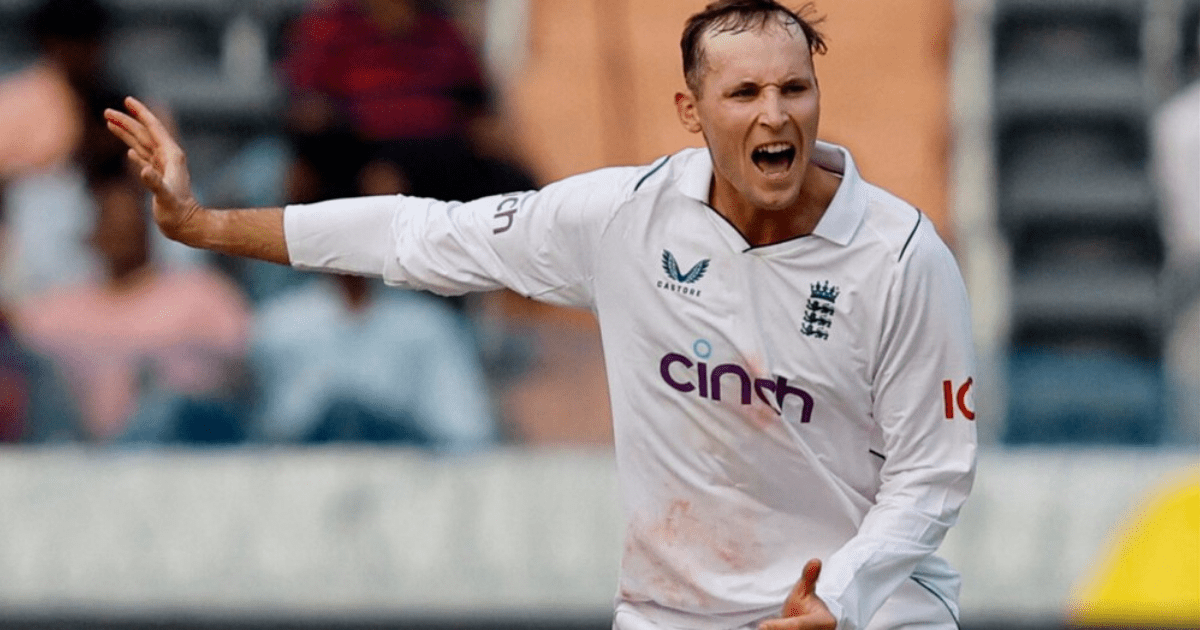Meteoric Rise to Success
Tom Hartley, a 24-year-old spinner from Lancashire, has gone from working in a garden centre to becoming a sensation in English cricket within just two months. His Test debut in India last week was nothing short of remarkable.
A Remarkable Debut
Despite a less-than-ideal start, with two wickets for 131 runs in the first innings and being hit for six on his first ball, Hartley truly stepped up in India's second innings. He finished with figures of 7-62, contributing to England's unlikely 28-run victory.
A Humble Background
What makes Hartley's achievement even more impressive is his humble beginnings. Just a couple of months ago, he was working at his family's garden centre in Merseyside. Hartley is the sixth generation of his family to work at Hartley's Nurseries, a horticultural business in Lydiate.
A Correlation Between Horticulture and Cricket
Hartley's father, Bill, who runs the garden centre, believes there is a correlation between horticultural work and being a successful spin bowler. He attributes problem-solving skills, attention to detail, and good habits as transferable qualities between the two disciplines.

Looking Towards the Future
With a promising start to his international Test cricket career, Hartley will be looking to build on his success in the upcoming matches. The second Test against India begins in Visakhapatnam on Friday.
Frequently Asked Questions
What are the benefits of fielding drills for a cricketer?
Fielding drills should be a part of every cricketer’s routine. In the modern game, fielding is a very important skill. Fielding is a crucial part of a cricketer’s training routine. The modern game places heightened emphasis on fielding standards. Fielding drills are designed to improve agility, catching accuracy, quick reflexes, and throwing accuracy. Regular practice helps fielders to be sharp and responsive in the field, which not only boosts the team’s defensive capabilities but can also contribute significantly to the team’s morale and momentum.
After a training session or match, do professional cricketers follow any specific recovery protocol?
Cricketers who are professional follow specific recovery protocols to ensure that they remain in top physical condition. These protocols may include cooldown sessions, stretching to ease muscle tension, or ice therapy to reduce inflammation. Nutrition and hydration, especially protein intake, are essential for recovery. The importance of adequate sleep and physiotherapy is also stressed. This may include massages, foam rollers, and injury-specific rehabilitation exercises. This comprehensive recovery program is essential for managing workload and preventing injuries.
What is the typical schedule of training for a cricketer who makes a living from it?
The training program of a professional cricketer is structured and rigorous. It focuses on developing physical fitness, technical skills, and game strategies. The morning sessions usually include cardiovascular exercises, weight training and agility drills. In general, the afternoons are reserved for skills-specific training like batting, fielding and bowling. In addition to regular net sessions, cricketers will often simulate match situations in order to prepare themselves for actual game situations. Rest and recovery, as well as adequate sleep and physiotherapy, are integral to the schedule.
What is the role of video analysis in a Cricketer’s Training?
Video analysis plays a key role in modern cricket training. Video analysis allows coaches and players to analyze past performances and pinpoint areas for improvement. It allows detailed analysis to be done on batting, bowling, and fielding techniques. By using slow-motion and other analytical techniques, players can refine and understand their skills and the strategy of their opponent. They can also improve their understanding of the game. Video sessions can be conducted in team meetings to help with tactical planning.
How does training differ for fast bowlers compared to spin bowlers?
Due to the differences in physical demands and technical requirements, training for spin bowlers and fast bowlers is very different. Fast bowlers are focused on improving their strength, endurance, and speed. Aerobic and strength exercises, in particular, will help them maintain energy throughout the day and improve their ability. Spin bowlers, on the other hand, focus more on their technical skills, including variations in grip, delivery stride and wrist position. They also use tactical game play, to try and out-think the batsman. Both bowlers focus on hitting specific lengths with accuracy and consistency.
Statistics
- Fielding drills comprise roughly 20% of a professional cricketer’s practice routine in the lead-up to competitive matches.
- Research indicates that fast bowlers need to maintain a body fat percentage below 15% to optimize performance and minimize injury risk.
- Post-match recovery protocols, including active recovery and physiotherapy, can reduce injury recuperation times by up to 30% for professional cricketers.
- High-intensity interval training (HIIT) sessions, which are regularly included in cricketers’ fitness regimes, can increase their oxygen consumption by approximately 5-10%.
- A typical professional cricketer may spend up to 12-15% of their training time on mental skills, such as visualization and cognitive exercises.
External Links
thecricketmonthly.com
bbc.co.uk
cricketworld.com
pitchvision.com
wisden.com
How To
How to prepare for recovery and rest in cricket Athletes
Planned recovery and relaxation is as vital as training itself. Develop a recovery strategy that includes active rest, like light cardio, stretching, yoga, or swimming, which aids in muscle recovery without overexertion. Sleep regularly to promote a healthy physiological recovery. Introduce massage and physical therapy, which can reduce the risk of chronic injury and help with recovery. Players should be educated on the importance of nutrition and hydration for muscle repair. Focus on the importance of carbohydrate intake and protein intake.

